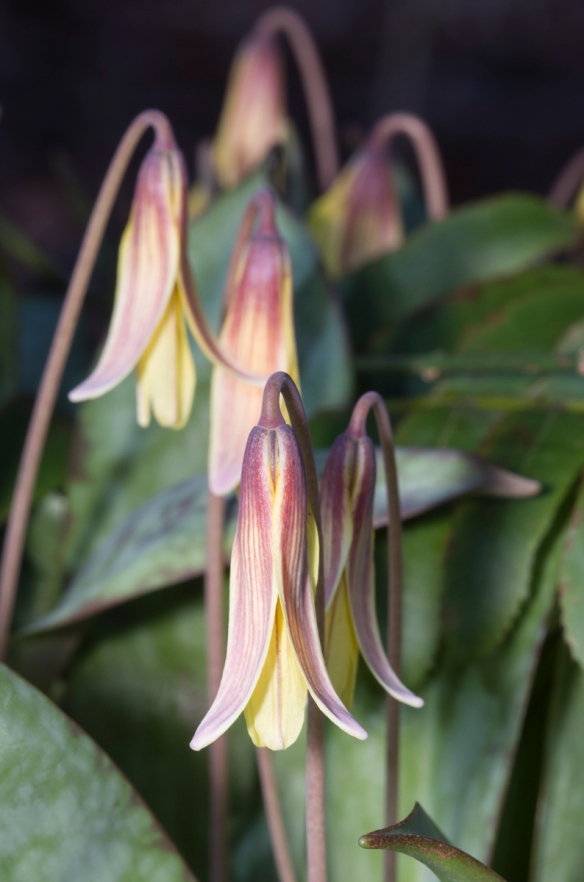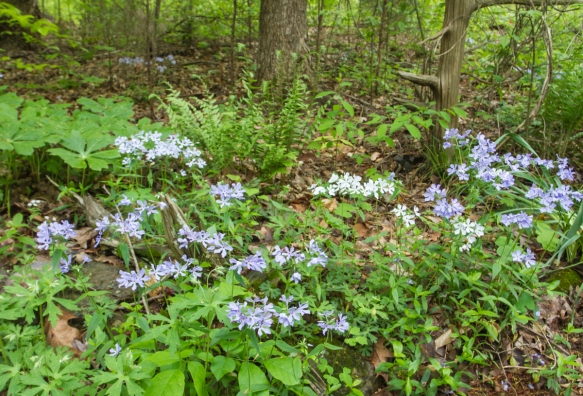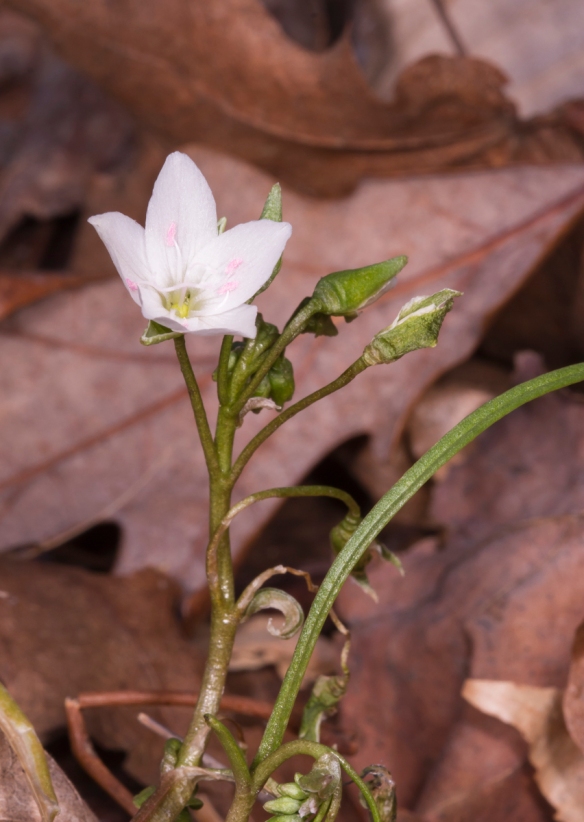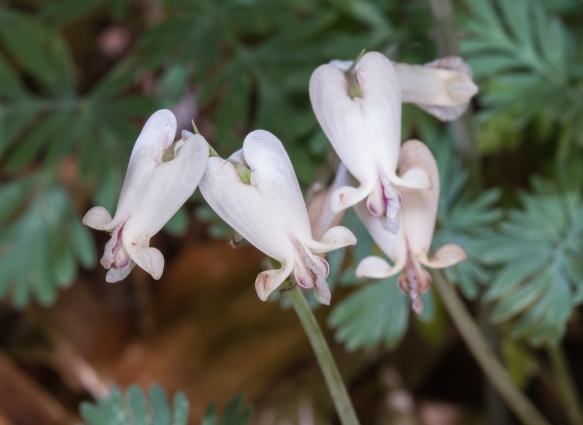Every spring is the only spring – a perpetual astonishment.
~Ellis Peters
The astonishment starts slowly, almost imperceptibly. The temperatures in this part of the world tease, and then take away the warmth, only to bring it back in a day or two. But the woods are more predictable than the thermometer. One of the first hints is that reddish tinge in the trees you see, usually while driving somewhere. The Red Maple flowers are amongst our earliest, and they signal the true change in season. The tiny red flowers lay scattered here in the yard now, mostly done for this year. But they awaken the spring consciousness in me, and I start to notice the other changes happening all around.

Spicebush flowers appear before the leaves (click photos to enlarge)
The tiny yellow puffs of flowers of the Spicebush, Lindera benzoin, appeared more than a week ago, a couple of weeks before the first leaves of this naive shrub. Spicebush can be found throughout our region, especially in the fertile soils along rivers and streams.

Spicebush flowers up close
Male and female flowers occur on separate shrubs, with only the female plants producing the bright red berries in Fall. Birds relish the fruit, and, dried and pulverized, the drupes were once commonly used as a substitute for allspice. The twig bark and leaves can be brewed into a tasty tea that purportedly has medicinal properties.

Spicebush Swallowtail caterpillar on its namesake plant
But I love this plant for another reason – one of its associates. The Spicebush Swallowtail butterfly lays its eggs on this shrub and on the leaves of Sassafras. This beguiling bug is one of my favorite caterpillars, complete with large fake eye spots, and a habit of folding the leaves to make a shelter, making it one of the easier caterpillars to find each Fall to delight visitors at the museum’s annual BugFest event. On our stroll last weekend, I was surprised to see very few of these supposedly deer resistant shrubs down in the creek bottom. It looks like they have been heavily browsed.

There were a few Hepatica flowers in bloom last week
But, to my delight, we did find a few Hepatica (Hepatica obtusa var. nobilis or Hepatica americana) flowers in bloom.

Hepatica flower
These tiny bluish-purple flowers are amongst the earliest of the spring ephemerals, barely poking their blossoms above the leaf litter. We probably found a half dozen flowers in our walk last weekend, so at least a few have survived the deer.

Bloodroot leaf is tightly furled before opening
A neighbor posted something on our list serve about Bloodroot (Sanguinaria canadensis) being in bloom this week. We did not see any leaves or flowers on our walk last weekend, but I did find a couple inside the deer fence yesterday. The single basal leaf pokes out of the ground tightly furled like a tiny textured flag wrapped around a pole.

Bloodroot flower bud
Each single flower stalk emerges wrapped in a single leaf. When the flower blooms, the leaf unfurls. The short-lived flowers remained tightly closed yesterday, perhaps awaiting a sunny day before opening up to potential pollinators.

Trout Lily clump in the yard
One of my favorite spring ephemerals is the Trout Lily (also called Dimpled Trout Lily), Erythronium umbilicatum. Blooming in early to mid-March, it can form dense colonies in areas like Eno River State Park and Johnston Mill Nature Preserve. There are a few plants that were transplanted into this yard during a plant rescue organized by the NC Botanical Garden. These volunteer efforts help rescue plants from a development prior to the bulldozers commencing their work. This is a great way to get plants for your yard and to save a bit of our native flora. Be sure to get permission from the landowners before doing any plant rescues.

Looking down on Trout Lily flower
The common name, Trout Lily, comes from the dappled leaves which are said to resemble the skin pattern of a Brook or a Brown Trout. Plants that will not flower have a single leaf, those producing flowers will have two leaves. I enjoy looking down on the flowers to appreciate their pattern.

Trout Lily flowers are closed early in the morning
Besides, you really have to almost lay on the ground to get a good photo of a flower due to their drooping habit. As with many spring flowers, Trout Lilies close each evening and may remain closed on rainy or cloudy days. This probably serves to protect their pollen and have it ready on warm, sunny days, when pollinators are apt to be more active.

Trout Lily flower
When fully open, the petals and sepals reflex upward, revealing the flower parts hanging beneath.

Trout Lily flowers remained closed in the rain yesterday
Yesterday, the flowers in the yard remained closed. The cool rainy weather may have slowed spring for a bit, but the next few days promise more astonishment. There is a noticeable reddish-pink cast to the twigs of the Redbud trees surrounding the house. Once they bloom, and that curtain is raised, the stage is set for the grand show to begin in earnest. If you get too busy for a day or two, you may miss some of it. Be sure to take some time to look around you these next few weeks, to observe and listen, and enjoy the arrival of the new season. It is truly a magical time to be a woods-watcher.



























































